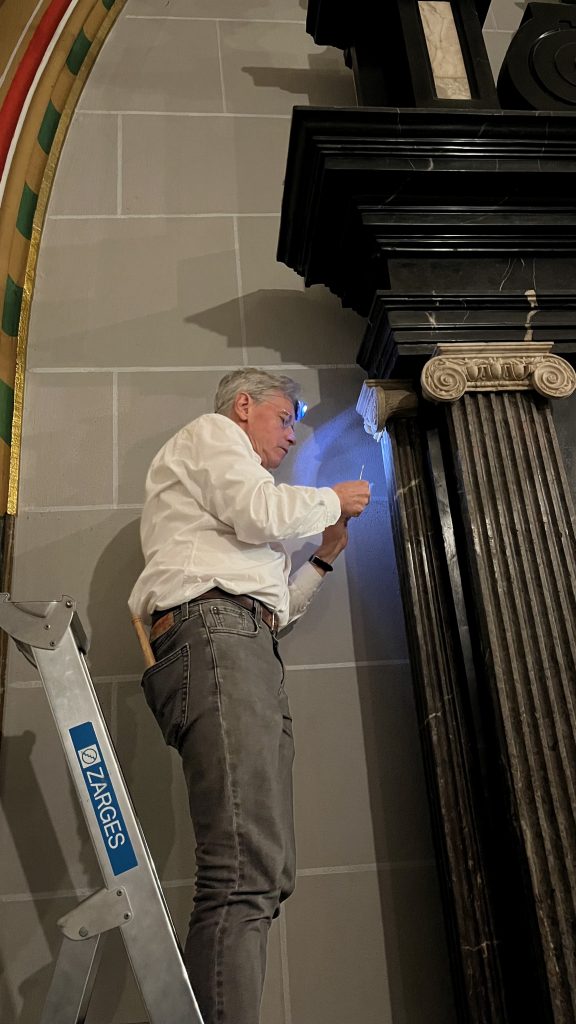From 4th to 6th October, a meeting of the Materi-A-Net project was held in Cologne to inform about the progress of the project, to exchange ideas with partners of the project, but also to give interested parties the opportunity to learn more about the project itself.
The first day was intended for an internal exchange between the project partners from France and Germany. It started with a general insight into the status quo of the project by Aleksandra Lipińska and Wolfram Kloppmann. This was followed by a discussion on the current challenges facing the project. Detailed information was provided about the ongoing field research, archive research and the material samples taken and analysed to date. This was followed by a presentation on the project’s IT infrastructure and methodology, given by Tobias Mercer and Jonathan Blumtritt. This was followed by a more in-depth look at the archival search, which Arthur Acker and Aleksandra Lipińska in particular are conducting. In the second part, Wolfram Kloppmann presented the process of isotopic fingerprinting and the resulting conclusions for art history. The two project partners Thomas Hildebrand and Olivier Rolland then spoke about their examination of the traces of workmanship that can be found on some alabaster works, which they were able to carry out and document as part of the alabaster exhibition in Leuven. In order to give the project participants an insight into sculptural practice, Thomas Hildenbrand presented his tools for working wood and stone used in alabaster. There was also the opportunity to try out the tools for themselves and to directly understand the creation of their traces.
The second day had a similar program, but there were also external guests invited, so that the discussion was even more varied. There was a general insight into the project, discussions about the database, a presentation about the tool marks and how these could be integrated into the database in the best possible way. In addition, a sub-project dealing with alabaster in the Ukraine was presented. Although not originally planned, our project was expanded to include this area of research in response to Russia’s attack on Ukraine and the subsequent expansion of the research team to include refugee researcher Dr. Ulyana Naumenko from the Ukrainian Academy of Sciences in Kyiv. Finally, the 3D models that were created for some artworks in the course of the project and are intended for the database were presented.
The last day ended with an excursion to Cologne Cathedral. Where several artworks made of alabaster can be found. These include a St. Peter and a figure of the Virgin Mary from the 17th century by Heribert Neuss, a relief and decorative elements of the back wall of the so called Dreikönigenmausoleum and the epitaphs of the brothers Archbishop Anton von Schauenburg and Adolf von Schauenburg. These were analysed using the non-invasive infrared method, partially sampled and examined for traces of workmanship. A small angel figurine, which was thought to be marble, also turned out to be alabaster using the non-invasive infrared method.
The lively exchange during the workshop was very inspiring for the continuation of the project.

